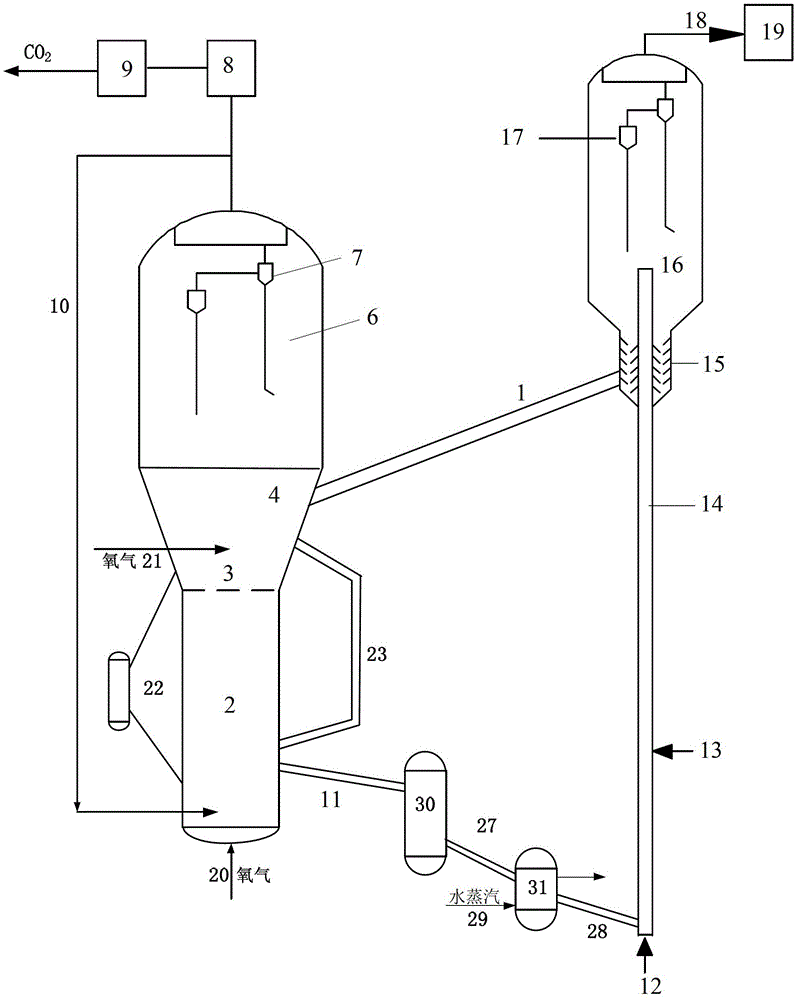A catalyst regeneration method to reduce carbon dioxide emissions and improve selectivity
A carbon dioxide and catalyst technology, applied in the field of regeneration of carbon-containing catalysts, can solve problems such as high coke and dry gas yields, and achieve the effects of reducing coke and dry gas yields, reducing investment, and reducing reserves
- Summary
- Abstract
- Description
- Claims
- Application Information
AI Technical Summary
Problems solved by technology
Method used
Image
Examples
Embodiment
[0036] The embodiment is carried out on a catalytic cracking demonstration unit, as shown in the accompanying drawing. The demonstration plant does not have a flue gas energy recovery system and a carbon dioxide separation system. The inner diameter of the dense-phase bed of the first regenerator is 60 cm, and the inner diameter of the dense-phase bed of the second regenerator is 30 cm. The catalyst is regenerated according to the regeneration method proposed by the present invention, and pure oxygen gas is introduced into the dense-phase beds of the first regenerator and the second regenerator respectively, and at the same time, the flue gas part from the cyclone separation system of the first regenerator is returned to the second regenerator. The bottom of the second regenerator dense bed. The bed temperature of the first regenerator is 680°C, and the dense-phase bed temperature of the second regenerator is 670°C. The residence time of the catalyst in the dense-phase bed o...
PUM
 Login to View More
Login to View More Abstract
Description
Claims
Application Information
 Login to View More
Login to View More - R&D
- Intellectual Property
- Life Sciences
- Materials
- Tech Scout
- Unparalleled Data Quality
- Higher Quality Content
- 60% Fewer Hallucinations
Browse by: Latest US Patents, China's latest patents, Technical Efficacy Thesaurus, Application Domain, Technology Topic, Popular Technical Reports.
© 2025 PatSnap. All rights reserved.Legal|Privacy policy|Modern Slavery Act Transparency Statement|Sitemap|About US| Contact US: help@patsnap.com

